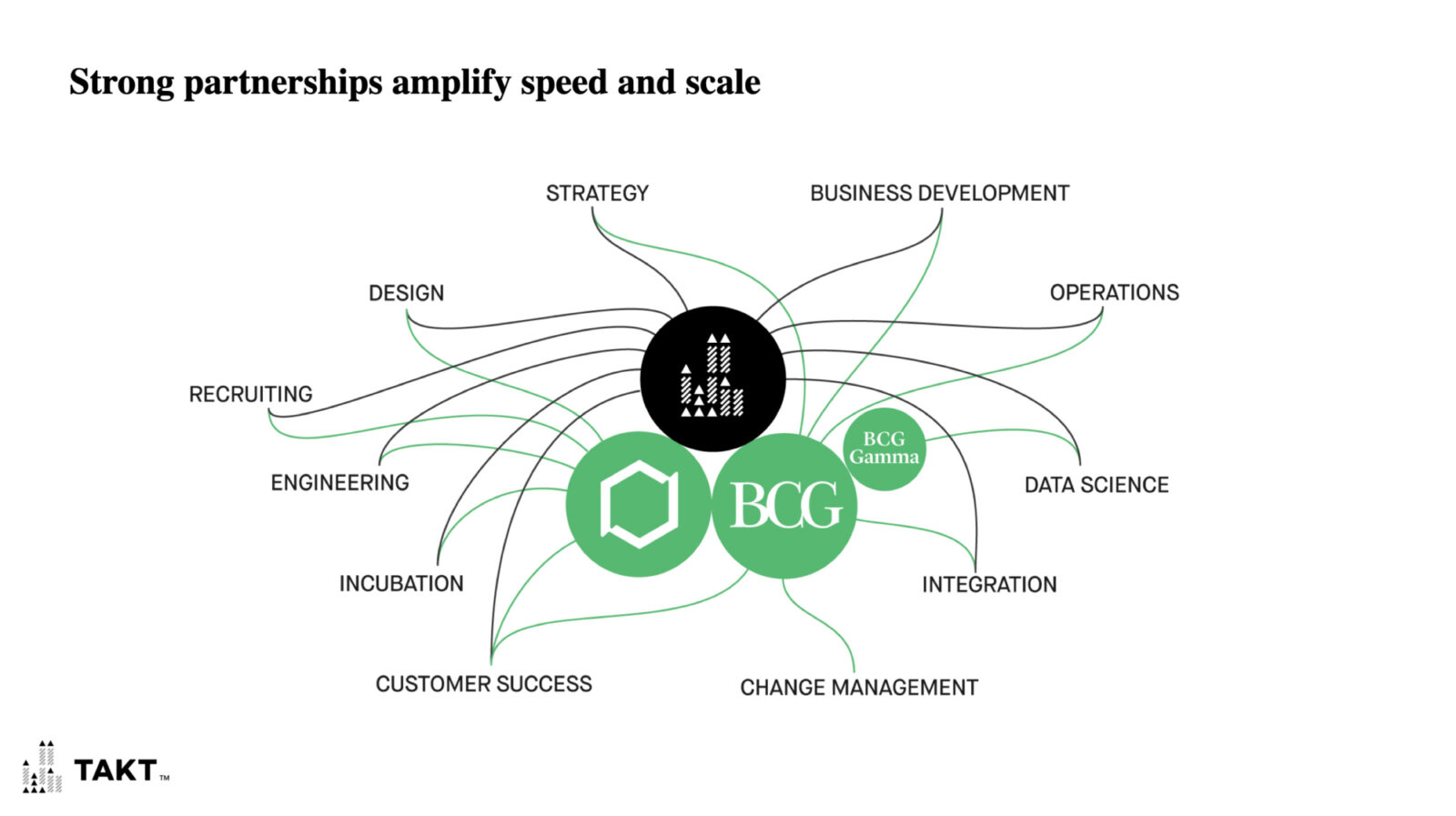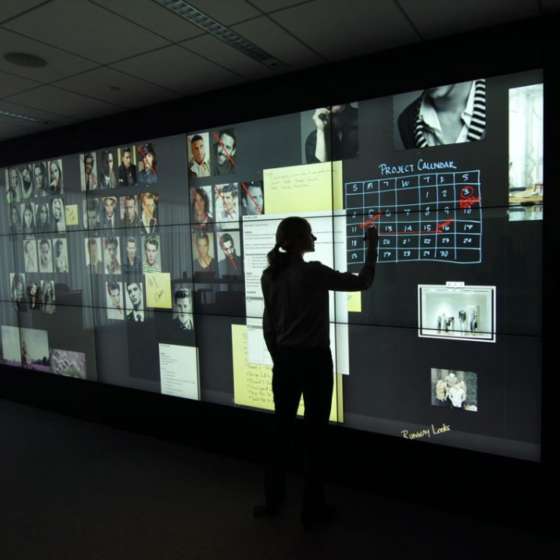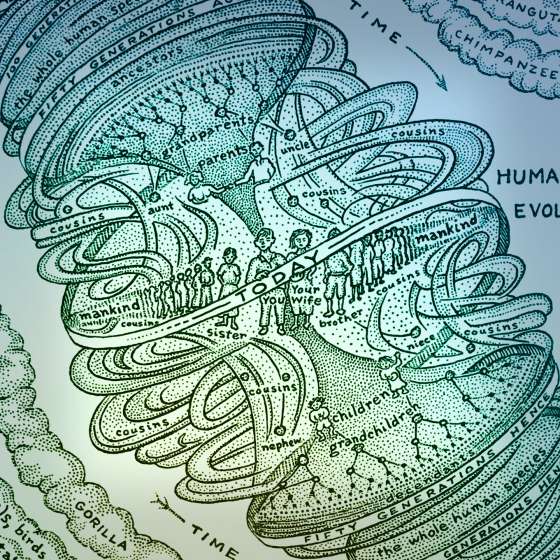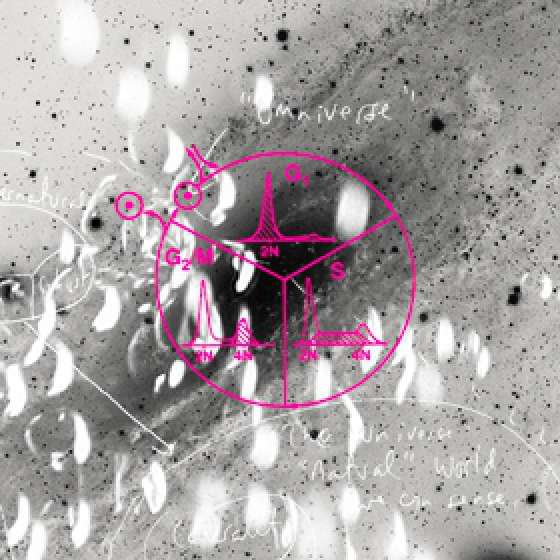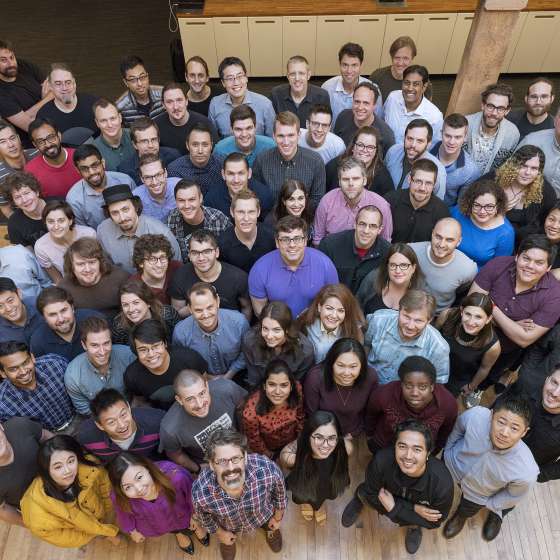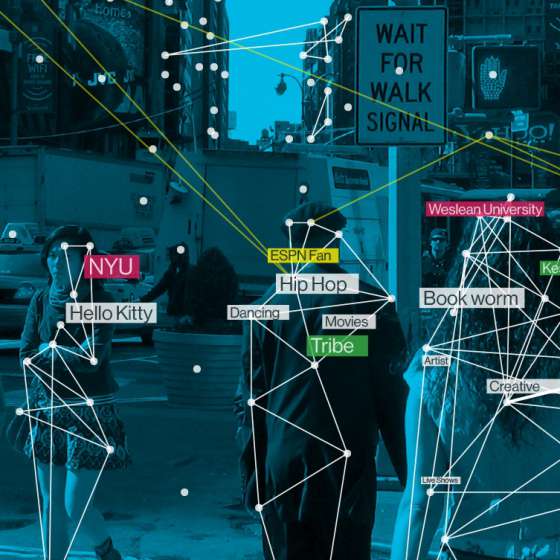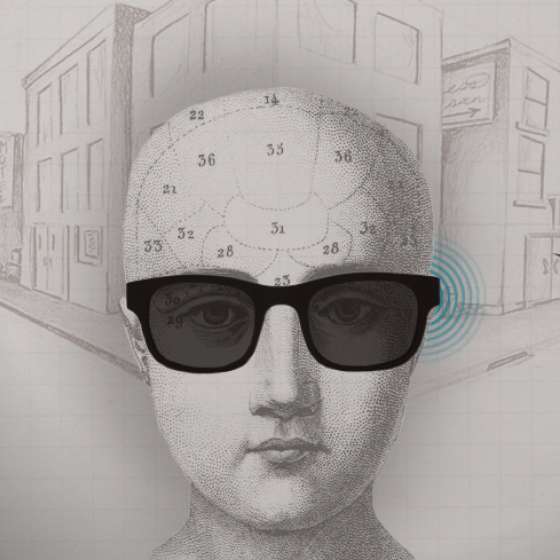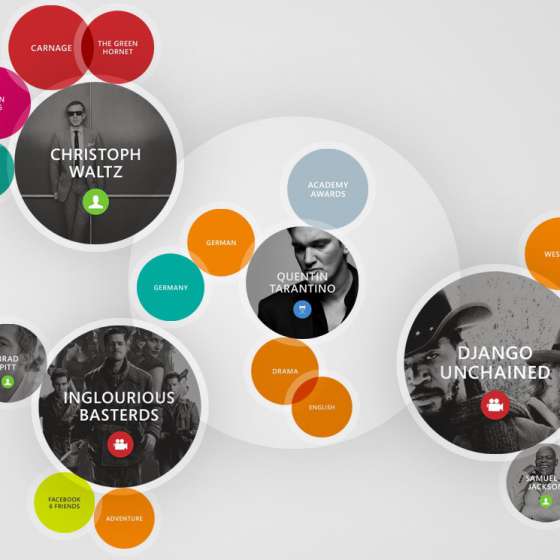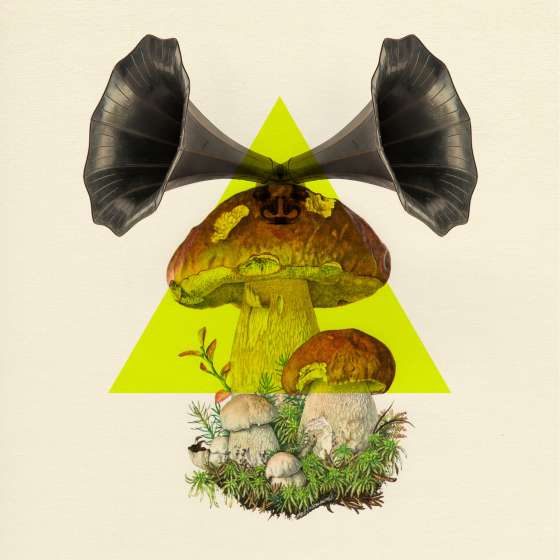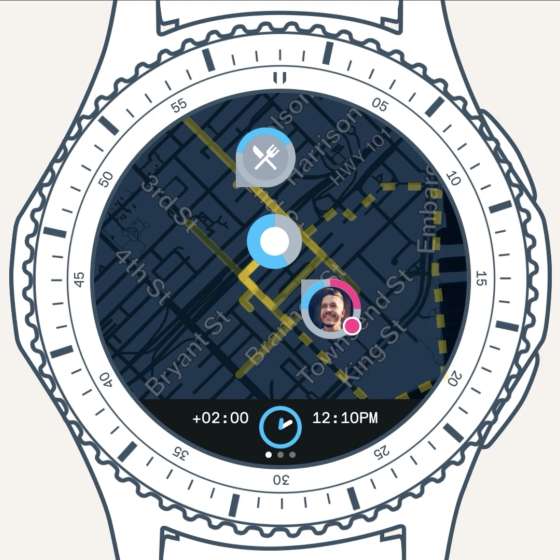Formation retrospective
This story is about my experience joining a corporate innovation incubator, pitching a successful venture, raising corporate venture capital, and scaling an enterprise software company. The lessons in this story are my reflections from the orientation of a design executive navigating startup challenges—some unique to this corporate venture, and others universal. The clarity of hindsight masks the messy business of creating and running a startup, and calling out any individuals is not my intent—decisions are often the result of many points of influence. That said, here we go!
In 2014, I joined BCGDV, an acronym for Boston Consulting Group Digital Ventures—we’ll call the group DV hence forth. DV was born from an unlikely alliance between some renegade business strategists and design thinkers who successfully turned around Sports Authority (before it failed again). The DV founders could see that many corporations were failing to innovate in the face of existential threat and, even with all their access to capital, couldn’t successfully compete simultaneously with the tech giants moving into their space and the stream of VC-backed startups looking to disrupt them. They set out to prove a business thesis that corporate investment in external, independent startup teams, in which they own a meaningful stake, would be more effective than internal innovation efforts. The end goal being the startup disrupting their corporate owner on their own terms. Many at DV were so bullish about this thesis that they’d often refer to the opportunity as an “unfair advantage.”
When I first heard the term “unfair advantage” I thought it sounded shady and wasn’t sure why it was being tossed around as a winning opportunity. I was new to the world of business consulting and still naïve to business as a competitive sport. Even then, I always felt an unfair game wasn’t fun to play—stacking the decks is cheating, and crosses my moral line. I came to realize this term was really about hyping an unproven idea that business management consultants and creative/tech consultants can out-perform startup founders funded by VCs.
Prior to joining DV, I worked at Microsoft—my first large company experience. I was fortunate to join a high-performing team with a fantastic leader, Blaise Agüera y Arcas. It seemed every project I worked on was destined to change the paradigm of computing or disrupt established global business models. Yet every six months, we would see massive re-orgs, priority shifts, and projects cancelled. As a principle design lead, I was close enough to the executive team to glimpse the corporate game. I could see that decisions were being made not on the promise of an idea or product, but on the risk tolerance of the project sponsor (which was often low). The complete lack of product-centric decision-making was disheartening. It was also disappointing to see the general risk-averse nature of the executive team.
I was increasingly curious about how and why business leaders make their decisions, which led to an enlightening conversation with Rick Chavez — an exec at Microsoft leading innovation. We talked about left and right-brain thinking of business and design, and how valuable design/business hybrids are. He nearly convinced me to enroll in a business school for a coveted Design MBA degree. But the seed was planted, and I set the intention to learn more about business strategy. I wasn’t long after when I received a call from a friend who was working at BCGDV.
I met with a DV co-founder who shared the vision of corporate innovation as external and independent—an incubator of disruptive, well-funded startups, financed by corporations' deep pockets, and supported by the esteemed business prowess of BCG. Coming from my experience at Microsoft, and hearing from friends about dismal attempts at corporate innovation, this sounded like a fantastic idea. I accepted an offer to join DV and build the San Francisco design cohort, primarily focused on healthcare and med tech innovation. Dream job!
A thesis is not a contract, and I quickly realized the promise of this win-win model was neither universally understood nor supported. Part of the theory was that BCG, as our parent company, would introduce us to their trusted clients—usually the senior C-Suite of Fortune 500 companies—and support our pitch to disrupt their companies from within.
Lesson #1: Management Consulting is a business built on trusted relationships—often fostered over many years. Inviting a group of disruptive design thinkers to the table is a big box of unknown.
My introduction to BCG was very memorable. I flew to Chicago for a multi-day leadership orientation workshop. This was a mix of partner-level BCG consultants and DV leadership, but geared toward BCG leaders. Apparently, this type of lateral hire into BCG’s organization is rare, as the expected path is to join as an intern, then grow gradually into a leadership role. One of my favorite insights from the orientation was learning about the founder Bruce Henderson’s philosophy that “organizations should grow like an oak tree”—slow and steady, with deep roots for a solid foundation. This philosophy applies to the BCG organization itself, with the requirement that the business and each employee grow at a steady rate—not too slow and not too fast. This insight will become more relevant a little later.
As our DV team built trust with our BCG counterparts, we found our chance to apply our methodology—a mix of classic IDEO-style design thinking with business-oriented design research, which we called “Strategic Design.” We also had a vague notion of rapid ideation and prototyping, but that step was theoretical for many in the room. The invitation to engage with BCG’s corporate client came with a catch—we had to work under the direction of BCG consultants—often acting as “Venture Architect.” If you’re familiar with management consulting, then you might see some potential for conflict here.
Lesson #2: Business consultants are from Mars and designers are from Venus—rare is the bird that bridges both worlds. Research seems an obvious place to find a bridge, but when the stakeholders are business-thinkers, deep empathy and qualitative meta-synthesis have little chance against cold, hard actionable quantitative result delivered in a vanilla Excel file.
After several “trial and error” ventures, we finally found one with the right balance of corporate sponsorship, meaningful opportunity, and harmonious team makeup. In 2015, I joined a BCG delegation speaking to the senior executive team at Starbucks about personalization. Where we struggled with friction between consultants and design thinking, there was suddenly a crystal clear vision delivered succinctly to the Starbucks team. Not only did we sell the idea of a new type of loyalty program, we also sold our vision of a corporate-backed venture.
Until this DV venture, we had sold all the prior opportunities by pitching an “ideation sprint”, a try-before-you-buy approach involving some design-led brainstorming and joint concept evaluation—typically giving DV 3-4 months to pull a team together and figure out how “real” the opportunity really was. The Starbucks team loved our loyalty program vision, but wanted assurances we had the team to build an enterprise-grade product. Our team consisted mostly of consultants and business strategists, and we built DV’s small development team for supporting innovation sprints, not enterprise software development. We had just a few weeks to prove we had the team.
Lesson #3: Pitching innovation ideation ≠ building enterprise software.
I’ve never met a problem that I couldn’t solve with a small rockstar team and a passion for the mission. Here, the opportunity and mission were clear—we just needed the rockstar team. I pulled the best design/engineering team I knew, Ryan and Jason Hickner—a brother duo who live in on an island in Washington. Rather than prove we had the experience to build our vision (since we didn’t), we returned with a mockup of the product we intended to build, and a promise that we could build a functional demonstration of it in 6 weeks. And if we had alignment, we would deliver an enterprise ready version of the product within six months.
In our next meeting with the senior leadership of Starbucks, we shared the vision with a working prototype. The question of our experience and ability were no longer the focus, but how quickly we could bring the product to market.
Lesson #4: Often the best way to build trust is by quickly showing value. People can pontificate about their accomplishments, but a bias for action with solid results speaks volumes about one’s abilities.
We’re off to the races with six months to deliver a real-time, 1:1, end-to-end, marketing automation platform using advanced machine learning for 20m+ users. While the story of how we built the product is exciting, this story is about lessons learned from creating a startup funded by corporate VC, so on we go.
The commitment by Starbucks to support the product development also triggered the investment conversation. Starbucks is usually a roll-your-own type of organization, which isn’t known for investing in startups, so we were in uncharted territory. Our DV corporate venture thesis intrigued the team, and the idea of an “owned” venture that sits outside the siloed internal structure potentially solved sluggish innovation efforts. There was also the promise of network effects from additional customers that could amplify optimization efficiency and influence engagement tactics. The BCG and DV team’s charm didn’t hurt either. In the end, we landed on a $25m series-A investment from Starbucks.
We took another $5m investment from B Capital, a BCG-affiliated venture fund, at a $120m valuation. The two investments represented a venture wholly owned by BCG and Starbucks. The deal team promoted the tight control over ownership and accountability as a win-win, but this became one of my future lessons.
As BCG employee co-founders, we carved out a small minority stake, a fraction of a traditional founder equity. I don’t yet have a strong position on this approach—on one hand, BCG took all the risk and our role extended our BCG employment, but the founder’s stake in the success of a startup is clearly an important factor in outcome of a venture. BCG’s controlling stake is evident in the cap tables, where future investment valuation may deem BCG’s stake as exceedingly expensive—time will tell.
Our $30m investment came with a couple of clear expectations:
- Deliver $1b of added value to Starbucks
- Reach $1b valuation (unicorn status) in less than 5 years
While these goals are standard-issue these days, I feel the second expectation became my hardest lesson learned. Much of this story will revolve around that expectation.
So we now have a 5-person team, $30m and six months to deliver our product promise to Starbucks. Along the way, we probably made some excellent decisions, some poor ones, and everything in between. We ultimately delivered the product experience as expected. Our first deployment with live customers was with 10% of their total loyalty population (still a very large user pool), and we immediately saw a 300% increase in engagement. Starbucks questioned our measurement methodology since it sounded too good to be true. We let them build their own calculations—turned out ours was conservative. Follow on deployments with new offer constructs were showing 5x-7x engagement. Completely off the charts.

Our Lens feature circa 2016 — a simple, yet powerful audience segmentation tool that unlocked a step change in experimentation speed and efficacy.
An exciting benefit of applying machine learning at scale is rapidly training and validation of the models. In my past, several efforts to leverage machine intelligence lost support before they could see the impact of the automation. The conventional startup approach of validating the product’s value and market fit, then scaling up, runs into a chicken/egg problem with the speed of training.
Lesson #5: Of all the benefits from the corporate venture model, leveraging machine learning at scale out of the gate is likely the greatest upside—an immediate step change in value and efficiency.
Over the next couple of months, we scaled up to the full loyalty population and added additional features to address some immediate operational pain stemming from the complexity of the overall operation. Even though we reduced the time it took for Starbucks to deploy an offer from 12 weeks to less than one week, the effort still required upwards of 150 person hours per offer.
From a design perspective, we were just beginning to understand the operational dynamics of how our product was being used, and where we could add more value. The team coordination between executives, business strategists, data scientists, copywriters, visual designers, and operational managers was complex and rife with friction. We were lucky to have such a dynamic test case to push the refinement and evolution of our product vision.
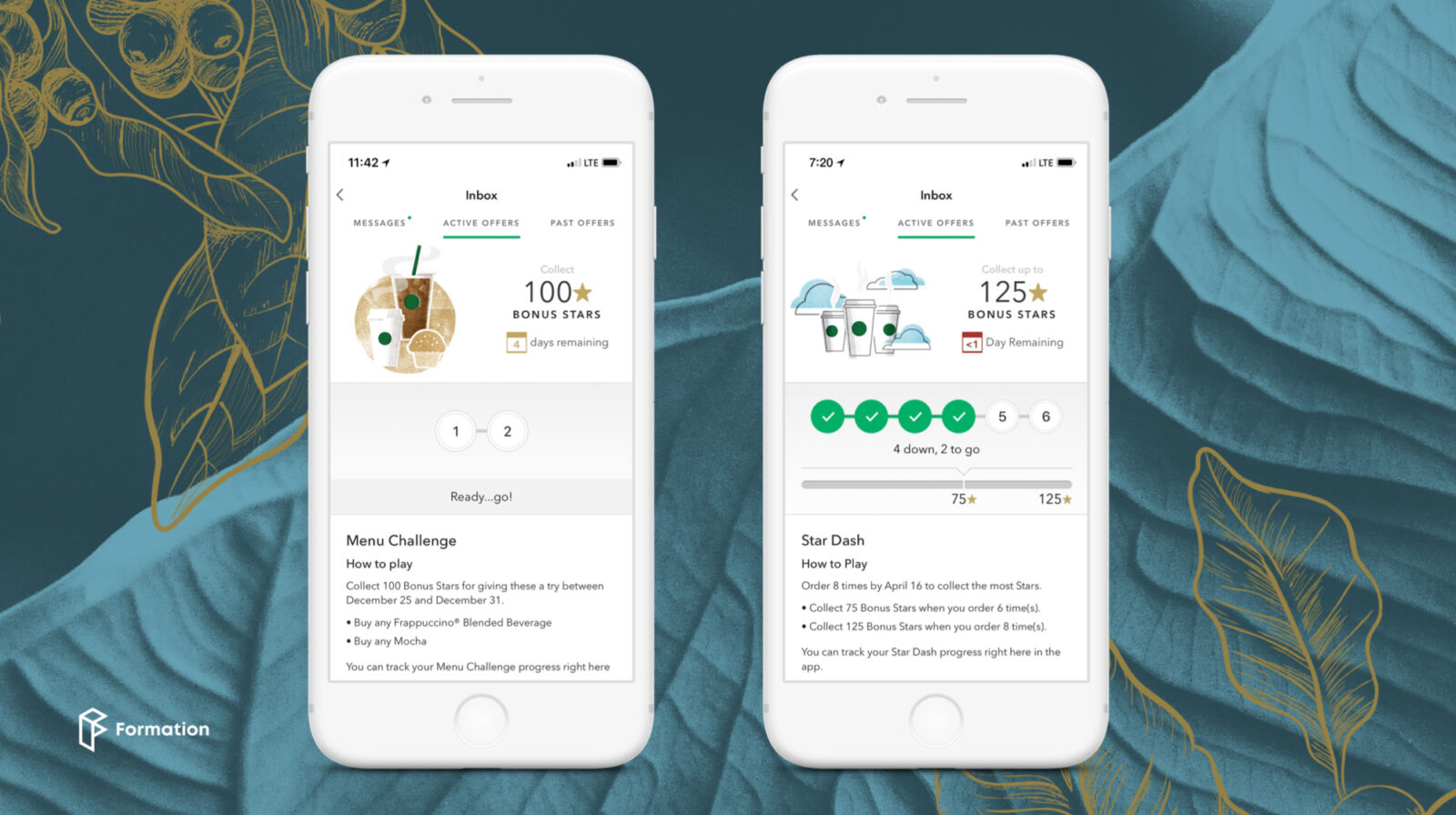
Examples of the 1:1 gamified offers we created for Starbucks. These offers nudge and reinforce new behaviors by mapping the steps to expected behaviors.
Then, just a few months after delivering the operational prototype to Starbucks, we received a mandate to sell our “product” to additional customers. This wasn’t a debate, it was a requirement, and reflected our commitment to achieving a $1b valuation. We discussed this requirement among the product and engineering teams, and there was a consensus that such a shift of focus would be a huge mistake. We built the solution for Starbucks’ unique business and operational needs, and there was significant work to be done before we would be ready to productize the platform.
As we started thinking about our sales and marketing efforts, we had an interesting realization that Starbucks was possibly unique in their focus on retention—as they’ve effectively saturated the entire planet and no longer had a need for acquisition-based marketing. There were no other companies in the world with as aggressive a loyalty marketing effort. The monthly operational cost of our solution, which included $500k/month in AWS compute costs, was about $3m, which delivered about $15m/month of incremental value—a great deal for Starbucks, but likely far too costly for the next customer.
The push towards new customers created the first major fission in our team. At the time we were growing fast, so we had new leadership joining with a clear mandate to prioritize productization. We went from proving the hypothesis of an entirely new type of loyalty marketing product to a mandate to scale it overnight. While we knew we’d need to shift towards scaling, the timing caught us by surprise.
Lesson #6: The process for realizing novel product ideas, and the team required to bring such ideas to life, differ greatly from the goals and team needed to build scalable, multi-tenant, hardened enterprise software.
The initial makeup of our board of directors included our CEO (ex-BCG consultant), three BCG partners, and one ex-BCG consultant (at the time running a leading enterprise software company) and a board observer from Starbucks. While the collective business acumen of the group was impressive, the lack of startup experience was also notable. This quickly became clear as the board focus usually emphasized our progress towards growth targets without a deeper understanding of product value and readiness.
We ran into some trouble when our mandate to scale didn’t align with our stage in our product journey. The problem-space of loyalty marketing is complex and multi-faceted, and our initial product hypothesis tried to solve this pain holistically. Looking at the end-to-end operational journey, we realized that by solving only part of the problem, we’d push the complexity elsewhere. We faced a complex product that was very difficult to scale. We made choices based on a clear path to scale rather than a clear product vision.
Lesson #7: A clear product mission and vision (which we lacked, but not for a lack of trying) helps anchor decision-making during challenging phases in the company’s growth.
We were delivering more than $200m of incremental revenue annually to Starbucks—their largest single source of revenue growth. The success of our product was the star of shareholder meetings and helped bolster their stagnant share price. Word of our success travelled, and we began receiving some inbound inquiries. This came when there was an extensive debate about the product offering and how to scale quickly. We offered our next customer a small portion of the offering provided to Starbucks, which was heavily subsidized by our engineering and data science teams to make up for the lack of tooling. Their willingness to adopt the simplified offering became the rationale for a new product offering.
Lesson #8: A sample size of one is not statistically significant. Captain obvious ;)
User research had been an important part of decision-making to date. The original ideas we proposed to Starbucks came out of extensive research. I believe the most efficient path towards validating a product hypothesis is through design research and rapid prototyping. I found myself in a challenging position where our second customer unintentionally validated a “headless” version of our product, and where the key customer stake-holders were not the operators. Our product strategy pivoted to building a black box AI solution.
“To satisfy the customer is the mission and purpose of every business.”
- Peter Drucker
The decision to simplify the product offering was driven by a requirement to scale, but was justified by our vision for a product primarily managed by machine intelligence. Reinforcement learning (RL) was how we envisioned managing the complexity of multi-variate optimization for 1:1 personalization. Implementation of an RL approach was already underway for Starbucks, so it wasn’t unreasonable to think we could promote the approach for our core offering. Part of the problems comes back to the stake-holders not being the operators (the people whose job it was to use our product).
Lesson #9: People want to claim credit for their work. If they can’t explain how the tools they use work, it becomes difficult for them to claim responsibility for the value created by the tool.
My design team tried to support the black box direction by building “explainability” tools, which are meant to illustrate ML decisioning, attribution, and cost/benefit analysis. But these insights only expose half the picture, if that, because the insights result from opaque and highly complex decision-making, and customer experience is abstracted into short-term, quantitative decisioning.
When you take operational control away from the strategic decisioning, human impact is abstracted into simple, short-term cost/benefit decisions. Where there was once an ethical concern for the long-term happiness of the customer, now sits the operator receiving dopamine hits from successful exploits.
I channelled my learnings about the ethical challenges of reinforcement learning and other AI automation practices into several public talks, including a talk at IXDA’s annual design conference and a fascinating roundtable discussion on AI and ethics, where I was the resident practitioner.
Ultimately, the black box direction failed. In part because savvy customers don’t trust black box solutions, and because the solution didn’t solve the holistic problem—it just shifted the pain to the other parts of the process. It’s easy to become seduced by the magic of intelligent automation and forget that humans are also intelligent and highly capable decision-makers. It’s easy to see the ultimate vision of a fully automated, end-to-end, intelligent solution, but we were not yet there.
So, the thing about most startups is that you eventually run out of money and need to raise more. Our story was impressive—we powered the two largest loyalty programs (Starbucks and United Airlines), our product was reliably delivering above customer expectations, and we were bringing in more than $20m/year in revenue. We imagined we’d get at least 50/250 ($50m investment on a $250m valuation).
Lesson #10: Starting off with a big Series A and a high valuation raises the stakes for subsequent investments.
As startups mature and become worth more, the cost to invest in them goes up. The scrutiny of indicators goes way up. Apparently, when 80% of your revenue comes from one customer, and your company is worth $250m, investors see this as an enormous risk. Investors also like to see familiar patterns—hockey-stick growth and a healthy TAM (total addressable market). We were unlike anything anyone had seen before, thanks to our DV strategy and the massive first customers.
We could not raise more money at any reasonable valuation. The knee-jerk reaction from our board was to pour fuel on the marketing efforts—if two customers are too risky, then we needed 20 ASAP. The black-box approach wasn’t finding any market fit, so we pivoted back to the initial product we built for Starbucks—a holistic, end-to-end beast-of-a-product. We still hadn’t productized this offering—we were starting again from scratch.
Lesson #11: Agree and commit. We second-guessed our initial product offering and chased after a shortcut without validating the approach with market research.
Our initial offering, one that landed our investment from Starbucks and drove $1b of value, was visionary and ambitious. While we were heads-down, analysts were taking notice and named our new category of loyalty offering "hyper-personalization" — not the words I would have used, but proud to be recognized.
What we had built from scratch in 6 months, five years prior, was where our team finally returned five years later. But the window of opportunity was nearly closed — our competitors were catching up and our offering in the market was confused. It's difficult to understand the decisions made in the moment, but our lack of commitment to our initial vision derailed the opportunity. And this is almost entirely due to #12.
Lesson #12: A leadership team with shared purpose and vision is paramount.
There were early signs of divergent vision among the founders and board members. Choosing to ignore the dissonance is one of those mistakes I will never make again. I' believe that even more important than aligned vision is a shared sense of purpose, not only company purpose, also human purpose — what we here to accomplish.
Historically, creating companies were multi-generational endeavors tied to community, and even societal, prosperity and pride. The idea of incubating companies for rapid growth and a quick exit is a very American idea, and I'm not sure it's one that fosters a deep sense of inner purpose.
Lesson #13: An exit doesn't always mean success
Formation wasn't able to raise more money. Our high valuation, high-risk profile, and growing competition created a story that sent warning signs to VCs. In addition, our unconventional corporate investment from Starbucks and lack of any prior reputable VC investments turned our "unfair advantage" into a cautionary tale. We were ultimately acquired by BCG as part of their growing AI and data services division under "BCG X" — a bitter-sweet end to a billion dollar aspiration.
Failure is a cruel, but important teacher. My experience with BCG and Formation was an incredible opportunity for personal growth and learning first-hand about some of the most cliche lessons in the startup founder's journey. If I had to choose one lesson to guide my future choices, it would be the importance of alignment among the founding team.
As a 30 year veteran of startups and product design, I hold companies and their products to a very high standard. Alan Cooper is one of my design heroes and I’ve long subscribed to his framework for building a successful product: finding the right balance of viability, capability and desirability. These three “legs of the stool” translate into the roles of business, engineering and product/design. Without finding balance, which means shared vision, ownership, priority, etc., the stool will not stand. Most of the lessons in this story result from our team not finding balance.
I hope these insights help you along your journey, and thanks for reading. If you'd like to keep up with my infrequent writing, consider subscribing to my Substack feed.
Posted
May 4, 2022

